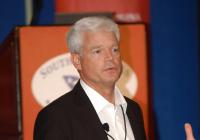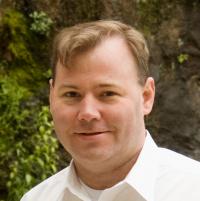
Energy Innovation Hubs established by the U.S. Department of Energy (DOE) strive to enable and accelerate translational research. Hubs focus on a single topic, with the objective of rapidly bridging the gaps between basic research, engineering development, and commercialization through a close partnership with industry. To achieve this goal, the Hubs necessarily consist of large, highly integrated and collaborative creative teams working to solve priority technology challenges. For the Consortium for Advanced Simulation of Light Water Reactors (CASL), in operation since 2010 as the first Hub by the DOE Office of Nuclear Energy, the focus is on commercial nuclear power generation, specifically the modeling and simulation (M&S) of nuclear reactors currently on the grid in the U.S. CASL not only strives to bring innovation to the nuclear energy enterprise but also to help retain and strengthen U.S. leadership in two DOE mission areas: HPC-enabled M&S and nuclear energy.
After a brief overview of CASL’s vision, mission, and strategic goals, the status of CASL’s R&D activities and products will be reviewed, with illustrative examples given where possible in the areas of radiation transport, thermal hydraulics, fuel performance, verification and validation (V&V), uncertainty quantification (UQ), and multiphysics coupling models and algorithms. These examples will be given within the context of CASL’s Virtual Environment for Reactor Applications (VERA). As CASL prepares for a possible second five years of execution, specific R&D plans and challenges will be reviewed, with suggestions for collaboration activities and opportunities.
Douglas B. Kothe (Doug) is the Director of the Consortium for Advanced Simulation of
Light Water Reactors, a DOE Innovation Hub at Oak Ridge National Laboratory (ORNL). Doug has been at ORNL since 2006 when he became the Director of Science in the ORNL National Center of Computational Sciences. Doug holds a PhD in Nuclear Engineering in 1987 from Purdue University, where his research focused on computational applications for inertial confinement fusion while serving as a Graduate Research Assistant at Los Alamos National Laboratory (LANL). After a brief period in the defense science program at Lawrence Livermore National Laboratory, Doug worked at LANL for 20 years (prior to coming to ORNL) where he held a number of research, program, and line management positions in applied and fundamental defense-related R&D programs sponsored by the DOE, NASA, DoD, and private industry. Doug’s research interests and expertise lies in the development of physical models and numerical algorithms for the simulation of a wide variety of physical processes in the presence of incompressible and compressible fluid flow.




